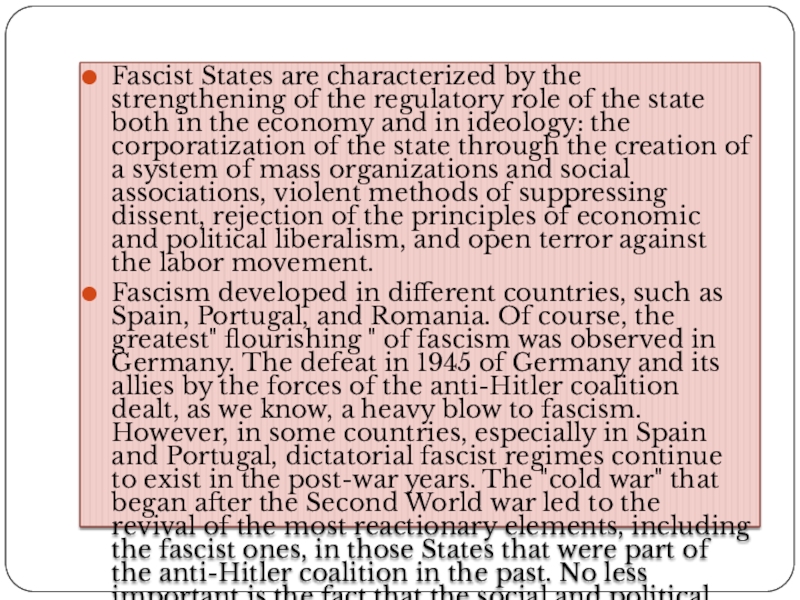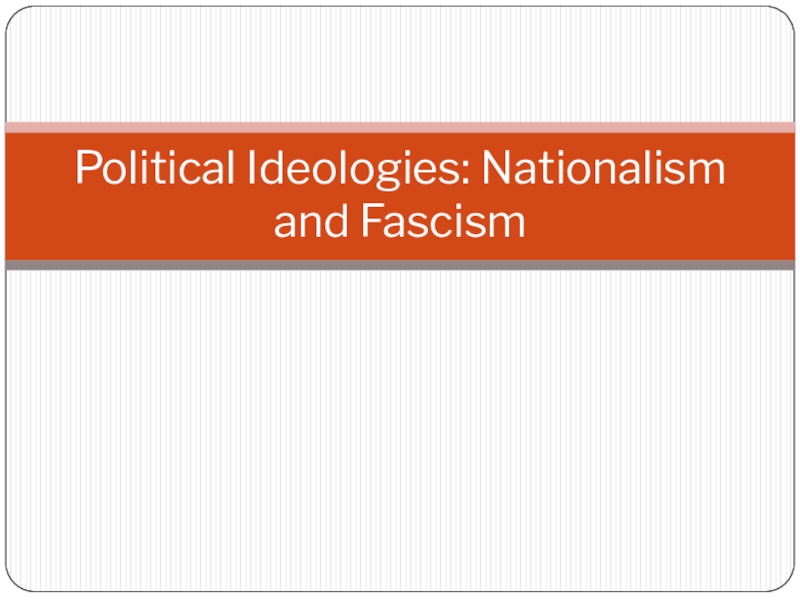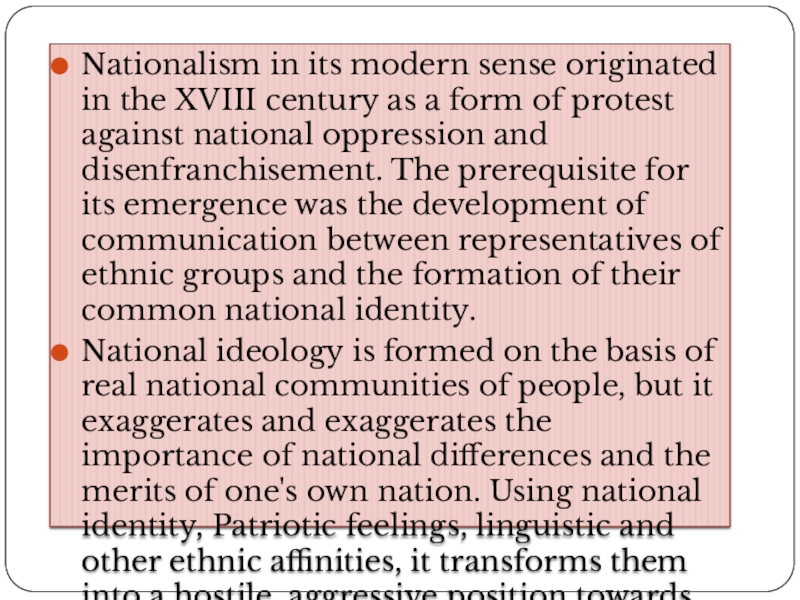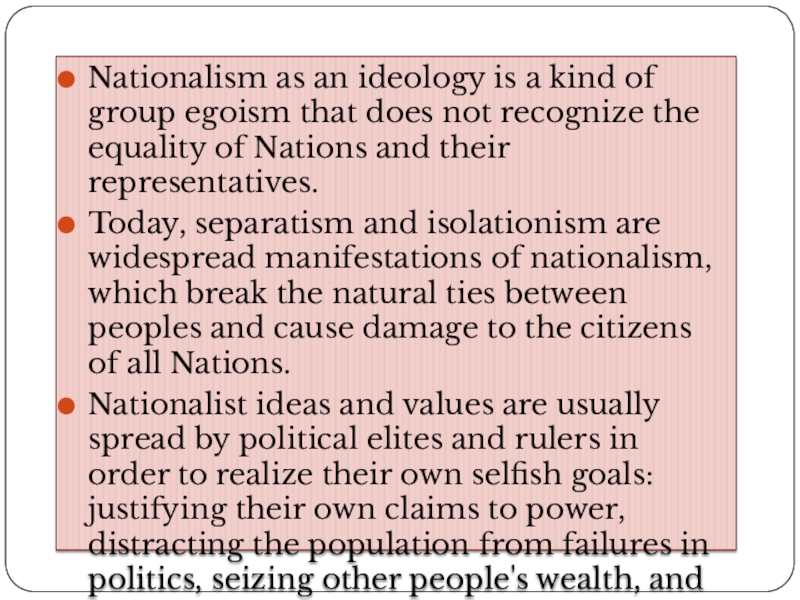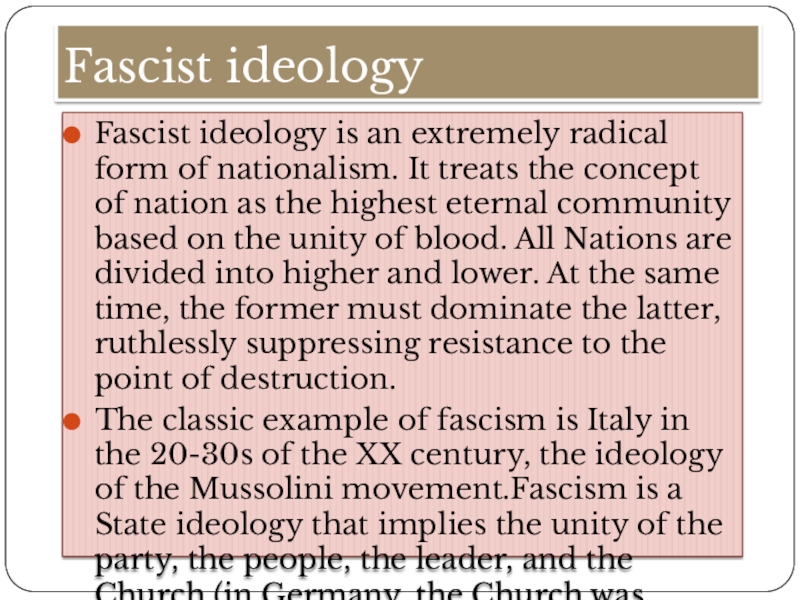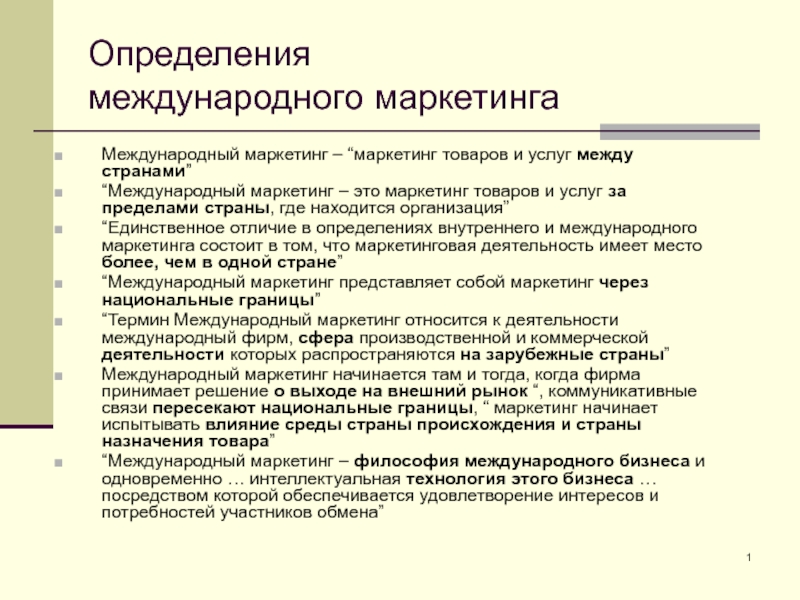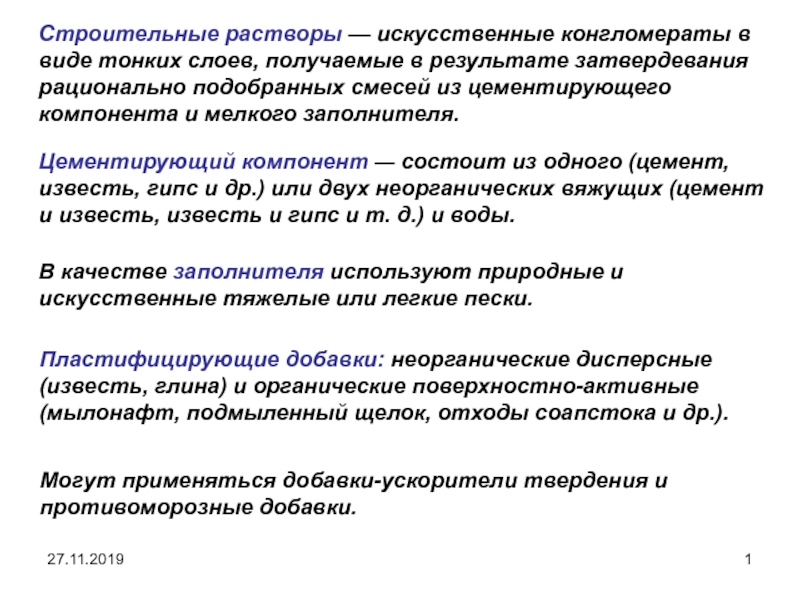Слайд 1Political Ideologies: Nationalism and Fascism
Слайд 2Nationalism in its modern sense originated in the XVIII century
as a form of protest against national oppression and disenfranchisement.
The prerequisite for its emergence was the development of communication between representatives of ethnic groups and the formation of their common national identity.
National ideology is formed on the basis of real national communities of people, but it exaggerates and exaggerates the importance of national differences and the merits of one's own nation. Using national identity, Patriotic feelings, linguistic and other ethnic affinities, it transforms them into a hostile, aggressive position towards other Nations.
Слайд 3Nationalism as an ideology is a kind of group egoism
that does not recognize the equality of Nations and their
representatives.
Today, separatism and isolationism are widespread manifestations of nationalism, which break the natural ties between peoples and cause damage to the citizens of all Nations.
Nationalist ideas and values are usually spread by political elites and rulers in order to realize their own selfish goals: justifying their own claims to power, distracting the population from failures in politics, seizing other people's wealth, and so on.
Слайд 4Features of nationalism:
* Based on the requirement that governments and
the governed must have a cultural identity;
* Cultural nationalism seeks
to preserve or restore national heritage;
* The development of modern mass communication systems facilitates the dissemination of a unifying national ideology;
* National ideologies are attractive to subordinate classes, providing them with some protection from exploitation;
* In the twenty-first century, nationalism is associated with the economic development of third world countries and the struggle for regional equality in societies.
Слайд 5Fascist ideology
Fascist ideology is an extremely radical form of
nationalism. It treats the concept of nation as the highest
eternal community based on the unity of blood. All Nations are divided into higher and lower. At the same time, the former must dominate the latter, ruthlessly suppressing resistance to the point of destruction.
The classic example of fascism is Italy in the 20-30s of the XX century, the ideology of the Mussolini movement.Fascism is a State ideology that implies the unity of the party, the people, the leader, and the Church (in Germany, the Church was separated from the state).
Слайд 6Fascism is characterized by the following signs and features:
1) denial
of democracy and its economic and political practices;
2) creating a
regime based on the principles of totalitarian-corporate statehood and one-party rule;
3) suppression of opponents of the state and any forms of dissent;
4) the fascization of society, the creation of paramilitary groups and the view of war as a natural engine of development and an important part of human life
Слайд 7The essence of fascism:
1) "strong state" and "primacy of statehood"
as an ideological basis;
2) " corporate company»;
3) "the principle of
leadership", as a result, the formation of a cult of personality " leader»;
4)state management of the economy or at least active state intervention in the economy;
5)merging the party apparatus with the state apparatus;6) unlimited powers of the police and "security services", persecution of "dissidents" up to their placement in concentration camps or physical destruction, at the same time, a brutal fight against crime, especially organized crime;
Слайд 87) the dissolution of all parties and social movements, except
for the fascist ones, with a special struggle against Communists
and any workers ' organizations that are not controlled by the ruling fascist party, and a ban on the activities of non-state trade unions;
8) developed propaganda, the state's monopoly on mass media and book publishing, party control over education-the desire for full state control over the consciousness of the population;
9) active appeal of the state also to the subconscious of people-propaganda hysteria, night marches with torches, etc.;
10) the formation of a mass of "unions" and social movements that govern the party and serve as its reservoir.
Слайд 9Fascist States are characterized by the strengthening of the regulatory
role of the state both in the economy and in
ideology: the corporatization of the state through the creation of a system of mass organizations and social associations, violent methods of suppressing dissent, rejection of the principles of economic and political liberalism, and open terror against the labor movement.
Fascism developed in different countries, such as Spain, Portugal, and Romania. Of course, the greatest" flourishing " of fascism was observed in Germany. The defeat in 1945 of Germany and its allies by the forces of the anti-Hitler coalition dealt, as we know, a heavy blow to fascism. However, in some countries, especially in Spain and Portugal, dictatorial fascist regimes continue to exist in the post-war years. The "cold war" that began after the Second World war led to the revival of the most reactionary elements, including the fascist ones, in those States that were part of the anti-Hitler coalition in the past. No less important is the fact that the social and political processes that gave rise to fascism and turned it into a very influential force at a certain historical stage continue to occur in our modern society.
